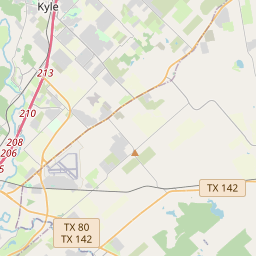Cementerio Navarro Historico







Also known as the Mexican Cemetery, this burial ground has served the Mexican-American community of Lockhart since around 1900. The earliest dated burial here, of area settler Severiano Sanchez, dates to 1901. Since that time, the cemetery has served primarily Hispanic and Roman Catholic residents.
A number of community leaders are interred here. Others, including business owners, farmers, laborers, ranchers, teachers and veterans of foreign conflicts dating to World War I, are also buried here. Several graves are marked by Woodmen of the World monuments, which led to the burial ground also being known as the Woodmen of the World cemetery or Panteón de los Hacheros. Other features in the cemetery include vertical stones, plot curbing and grave slabs.
In 2005, descendants of the interred formed the Cementerio Navarro Association to restore and maintain the burial ground. The association named this site Cementerio Navarro Histórico after the noted Tejano statesman and signer of the Texas Declaration of Independence, José Antonio Navarro. The cemetery is also near the site of the Old Navarro Elementary School, which was known historically as the Mexican School. Today, Cementerio Navarro Histórico continues to serve descendants of those buried here. It remains a chronicle of the Mexican-American pioneers of Caldwell County and a testament to the difficult and laborious circumstances under which they settled and thrived
As one of the most visible programs of the Texas Historical Commission (THC), historical markers commemorate diverse topics in Texas history, including: the history and architecture of houses, commercial and public buildings, religious congregations, and military sites; events that changed the course of local and state history; and individuals who have made lasting contributions to the state, community organizations, and businesses.
The state of Texas was once an independent country known as the Republic of Texas. It gained independence from Mexico in 1836 and was a separate nation until it was annexed by the United States in 1845.
In 1834, Mexican impresario, Green DeWitt, received a land grant from the Mexican government and began attracting American settlers to the area. The town of Lockhart, named after James W. Lockhart, one of DeWitt's surveyors, was established in 1838 and became the county seat in 1848. The county was officially organized the following year.
During the Civil War, Caldwell County, like much of Texas, was divided in its loyalties. Many residents sided with the Confederacy and fought in the war, while others were Union sympathizers. The conflict left deep scars on the county, but it managed to recover and thrive in the post-war years.
Throughout the late 19th and early 20th centuries, Caldwell County's economy was primarily agricultural, with cotton being a major crop. The arrival of the railroad in the late 1800s boosted economic growth and allowed for easier transportation of goods. Over time, the county diversified its economy, with industries such as oil and gas, cattle ranching, and manufacturing becoming prominent.
Today, Caldwell County is known for its historic charm, scenic beauty, and a strong sense of community. It is home to several notable landmarks, including the Caldwell County Courthouse, which is listed on the National Register of Historic Places. The county continues to evolve and adapt, while also preserving its rich history and heritage.
Caldwell County Timeline
This timeline provides a condensed summary of the historical journey of Caldwell County, Texas.
- 1848 - The Republic of Texas holds a land lottery and grants land in the area to settlers.
- 1849 - Caldwell County is officially established.
- 1852 - The county seat is named Lockhart.
- 1876 - The first courthouse in Lockhart is built.
- 1887 - The discovery of oil in the county brings prosperity.
- 1922 - The current Caldwell County Courthouse is constructed.
- 1948 - The Chisholm Trail Museum is established in Lockhart.
- 1984 - The Circuit of the Americas racetrack is built in the county.